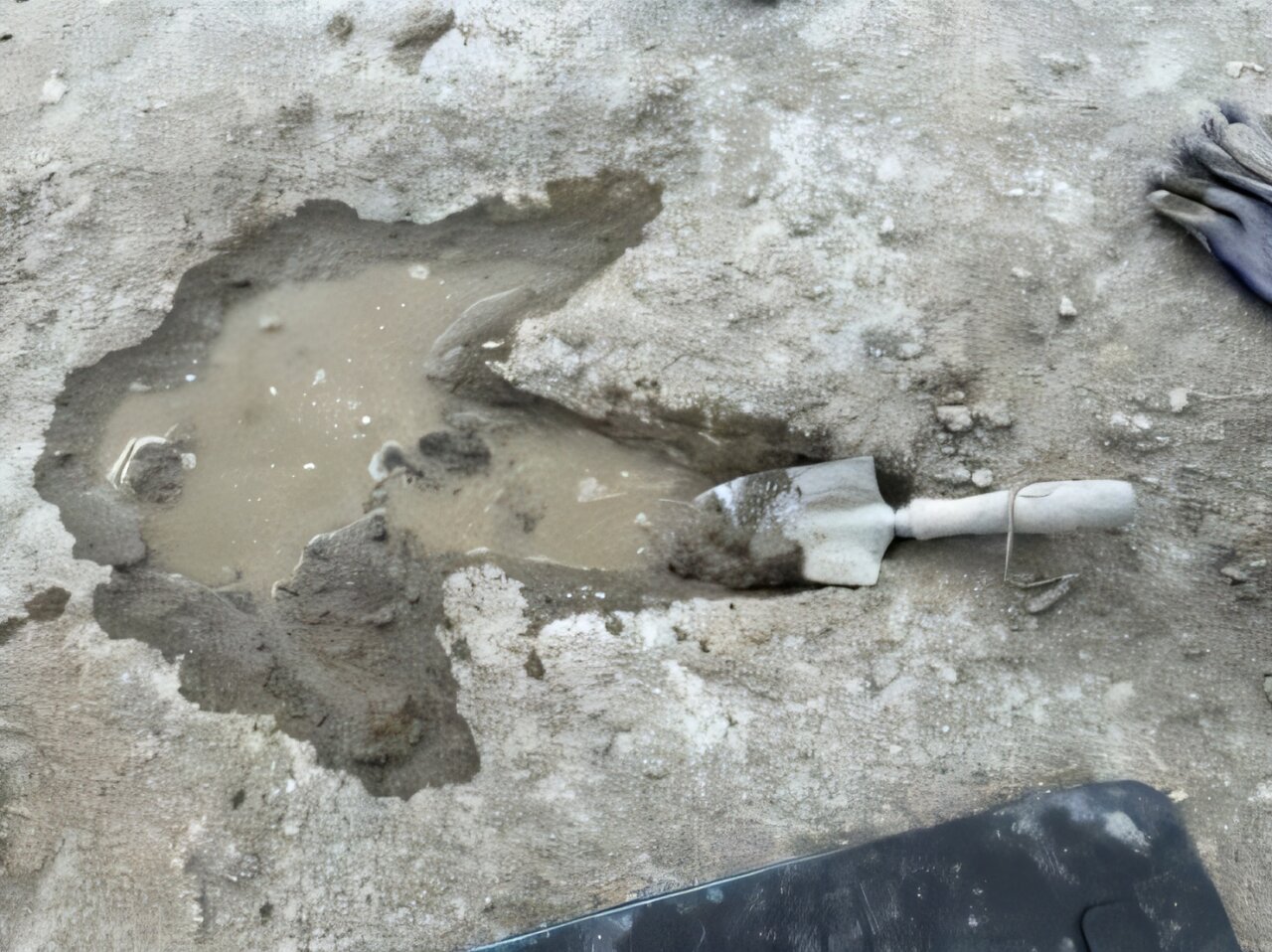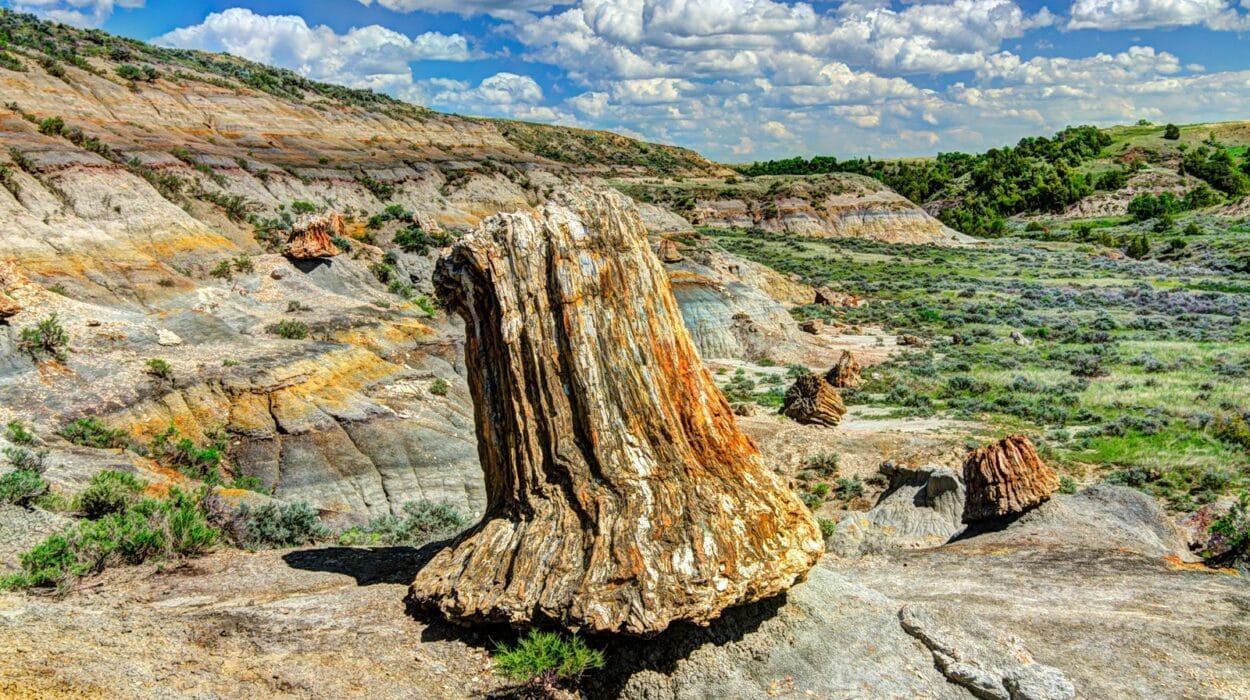In an extraordinary discovery, scientists from the Universities of Oxford and Birmingham have unearthed an extensive expanse of quarry floor adorned with hundreds of dinosaur footprints, forming multiple enormous trackways. This remarkable find dates back to the Middle Jurassic Period, approximately 166 million years ago, shedding new light on the prehistoric ecosystems that existed long before modern life forms emerged.
The tracks, preserved at Dewars Farm Quarry in Oxfordshire, represent an ancient “dinosaur highway” and feature footprints from a wide array of species. Among these are impressions left by the formidable predator Megalosaurus, which reached lengths of up to nine meters, and colossal herbivorous dinosaurs, likely Cetiosaurus, measuring up to 18 meters in length. These tracks offer a snapshot of life during a time when Earth was dominated by tropical environments and gigantic reptiles roamed the land.
The excavation uncovered five expansive trackways, the longest spanning over 150 meters. Four of these were attributed to the massive, long-necked herbivorous sauropods, such as Cetiosaurus, a relative of the Diplodocus. The fifth trackway was left by the carnivorous Megalosaurus, whose three-toed prints reveal details about its distinctive claws and gait. Interestingly, one area of the site exhibits overlapping footprints of both carnivorous and herbivorous dinosaurs, raising intriguing questions about potential interactions between these species.
Megalosaurus holds a special place in paleontology as the first dinosaur to be formally named and described in scientific literature. This milestone occurred in 1824, marking the inception of modern dinosaur science. Dr. Emma Nicholls, a vertebrate paleontologist at the Oxford University Museum of Natural History (OUMNH), emphasized the ongoing importance of Megalosaurus research. “Scientists have been studying Megalosaurus for nearly two centuries, and yet these discoveries demonstrate that there is still much to uncover about these creatures and their world,” she remarked.
The footprints were initially detected by quarry worker Gary Johnson, who noticed unusual bumps while clearing the clay-covered quarry floor. Realizing the potential significance of these impressions, he alerted experts, prompting a week-long excavation effort in June 2024. The collaborative effort brought together over 100 individuals, including researchers from the Universities of Oxford and Birmingham, along with local quarry staff and volunteers. Using advanced methods such as aerial drone photography, the team created detailed 3D models of the site, documenting the tracks with unprecedented precision for future study.
Professor Kirsty Edgar, an expert in micropaleontology at the University of Birmingham, praised the significance of the discovery. “These footprints provide an extraordinary glimpse into the lives of Jurassic dinosaurs, allowing us to reconstruct their movements, behaviors, and the environments they inhabited,” she explained. The site offers valuable insights into a tropical lagoon ecosystem, complete with mud, burrows, and plant material that complement the dinosaur tracks.
Support from the quarry team, led by manager Mark Stanway, proved instrumental in the excavation. The team contributed extensive knowledge of local geology and operated specialized machinery such as excavators and rock saws to carefully uncover the fossilized footprints. This collaborative approach underscores the importance of partnerships in advancing scientific discovery.
The newly uncovered trackways build on earlier findings in the region. In 1997, limestone quarrying efforts revealed over 40 sets of dinosaur footprints, with some trackways stretching as long as 180 meters. That site was designated a Site of Special Scientific Interest due to its exceptional scientific value, although limited photographic evidence exists, as these discoveries predated modern imaging technologies. Today, new techniques allow for comprehensive documentation, vastly enhancing the potential for research and education.
Professor Richard Butler, a paleobiology expert at the University of Birmingham, highlighted the long-term significance of the recent discovery. “This site is a vital part of our Earth heritage, and the 3D models we’ve created ensure that this piece of our past will be accessible for future generations,” he said. The dataset includes over 20,000 images of the prints, which are expected to provide valuable insights into dinosaur locomotion, size, and behavior. Researchers aim to investigate the biomechanics of dinosaur movement, analyzing the footprints for clues about walking speeds and interactions.
Dr. Duncan Murdock, an Earth scientist at OUMNH, marveled at the exceptional preservation of the tracks. “The level of detail is astounding. We can see how the mud deformed as the dinosaurs stepped into it, offering a vivid picture of the lagoon environment they inhabited,” he stated. Alongside the footprints, fossils of burrows, shells, and plants help recreate the dynamic and biodiverse habitat of the Jurassic period.
The discovery will also receive widespread attention through public engagement initiatives. The excavation will be featured on the BBC program “Digging for Britain,” hosted by Professor Alice Roberts, with episodes available on iPlayer and BBC2 starting January 7, 2025. The findings will also be showcased in the Oxford University Museum of Natural History’s exhibition “Breaking Ground,” which highlights milestones in our understanding of Earth’s history.
Visitors to the museum will have the opportunity to view original Megalosaurus fossils, images, and videos from the excavation, and learn about the advanced techniques used in modern paleontology. These efforts aim to make the excitement of dinosaur research accessible to the public while emphasizing the importance of preserving Earth’s prehistoric heritage.
Source: University of Oxford






